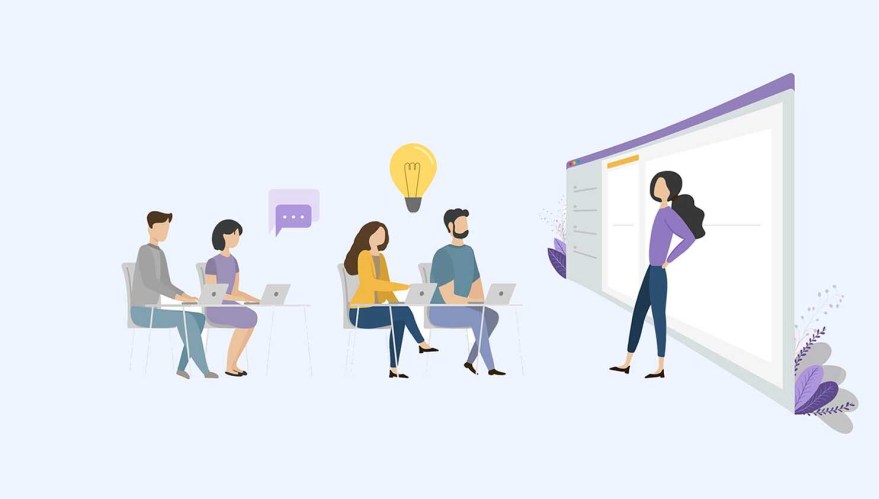Welcome to the digital era, where artificial intelligence reigns supreme and organizations find themselves on the cusp of a revolution. The AI future is here, driving incredible business momentum. Leaders and individuals are scrambling to understand the risks and opportunities of implementing AI, all while trying not to fall too far behind the competition on the rapidly evolving AI path.
To prepare for an AI future, businesses must adopt a strategic and holistic approach that addresses several key factors. Let’s delve into the essential steps to shift your organization into an AI-driven powerhouse.
Learn the Five Essential Functions for AI Transformation
AI is no longer a future concept—it’s reshaping businesses today. You need the right roles to operationalize AI effectively. Discover the five key emerging functions that will drive your AI-driven business transformation.



How to introduce AI safely
Introducing AI into an organization requires creating a safe and supportive environment. Encourage your teams to embrace change and take risks. Building trust within the organization allows individuals to feel secure in their roles and motivates them to explore the potential of AI.
To create a safe and supportive environment for AI adoption:
- Foster a culture of transparency: Promote open and honest communication about AI initiatives, addressing concerns and providing clear explanations.
- Encourage innovation and experimentation: Create opportunities for employees to explore AI technologies and experiment with new ideas, empowering them to contribute meaningfully to the organization’s journey along the AI path.
- Provide learning and development opportunities: Demonstrate organizational support by offering training programs, workshops, and resources. Your teams will feel encouraged to acquire new skills and enhance their understanding of AI.
- Recognize and reward contributions: Acknowledge and celebrate employees who engage with AI initiatives. This fosters a sense of value and motivates individuals to take part in the AI transformation.
By cultivating a positive attitude toward change, organizations can set themselves up for the opportunities of an AI future.
Show employees their AI path
To successfully adopt AI, it’s important to communicate a compelling human-centered vision. While AI may seem impersonal, we need to emphasize the beneficial impact it can have, especially considering the low barriers to entry that make it accessible to a wide range of users.
One of the key advantages of AI technology is its low barrier to entry. Consider the example of TikTok, a social platform that reached 100 million users in just nine months. In comparison, the generative AI engine, ChatGPT, achieved the same milestone in a mere two months. This showcases the ease with which AI technology can be adopted and the rapid pace at which it can be embraced on a global scale.
To achieve successful adoption of AI:
- Communicate the human-centered benefits of AI: Emphasize how AI can enhance productivity and automate tedious tasks. Present AI as a valuable asset that augments, not replaces, human work and as a change that can expedite work and improve job satisfaction.
- Find and communicate specific benefits: Illustrate the time-saving advantages of AI adoption. Position it as a personal assistant that streamlines workflows and frees up time for more meaningful work.
- Make a strong case for change: Communicate the consequences of not embracing AI. Reflect on industry best practices, highlighting the unprecedented pace of AI adoption and the low barriers to entry.
By focusing on human-centered benefits and highlighting the low barriers to entry, organizations can quickly integrate AI solutions into their workflows, opening the doors to a variety of industries and sectors along the AI path. This accessibility allows for a more inclusive adoption process and opens the doors to a variety of industries and sectors.
Give everyone the AI skills to succeed
Empowering your organization with the right tools and strategies is crucial for staying competitive and driving success. Consider developing a comprehensive training program and a formal AI adoption process. With practices like these in place, your teams can stay agile with evolving technology.
These three crucial steps have proven essential for successful digital transformations:
- Define training initiatives: Make AI training a mandatory part of employee enablement. Salesforce, for instance, recognized the importance of equipping its employees with a secure and thoughtful approach to using AI. This step was essential during their shift to becoming the world’s #1 AI CRM.
- Create formal processes to increase AI adoption rates: Don’t wait for team members to explore AI in their spare time. Establish structured processes to integrate AI innovation into everyone’s work, driving the entire organization forward on the AI path. Consider forming dedicated committees to drive AI advancements or measuring the number of AI ideas submitted by engineers. Whatever structure you choose, formalizing the adoption process is key.
- Be flexible with evolving AI technology: Stay updated with the latest advancements in AI. In a rapidly changing landscape, businesses must prepare to adapt and shift their initiatives. Embrace flexibility and agility when working with AI technologies.
By embracing digital transformation best practices and incorporating AI into formal processes, organizations pave the way for continued success in the AI future.
Need help with
your generative
AI strategy?
Whether you’re starting out with AI or already innovating, this guide is your road map to delivering a trusted program blending data, AI, and CRM. The goal? Helping your teams focus on high-value tasks and build stronger customer relationships.



How to safeguard your data with AI
While AI presents immense opportunities, one crucial concern is the ethical use of AI. It is imperative to safeguard your company’s sensitive customer data with a trusted AI platform, such as Salesforce Einstein, built on the Einstein GPT Trust Layer. Trustworthy AI platforms implement robust data protection measures, including encryption, access controls, and compliance with data privacy regulations.
To safeguard your sensitive data and maintain the trust of your customers:
- Establish an ethical governance framework: Promote transparency, fairness, and accountability in AI algorithms and decision-making processes. This ensures responsible deployment is aligned with your business values.
- Prioritize data privacy and security: Enforce stringent measures to protect sensitive information. Comply with regulations, and follow industry best practices. Since AI relies heavily on data, protecting that data fosters trust among customers, partners, and stakeholders.
- Provide regular training and upskilling programs: Be sure your enablement training covers the technical aspects of AI as well as an understanding of its limitations and risks. With this knowledge, employees can make informed decisions and take appropriate actions along the AI path.
By deploying AI responsibly and understanding the needs and obstacles to adopting AI, organizations can become trusted leaders in the era of artificial intelligence.
Start your AI transformation with these tools
Revolutionize your organization’s productivity, efficiency, and customer experiences for an AI future by aligning your strategies with the ever-evolving AI path. By creating safety, providing a human-centered reason for change, empowering your teams, and safeguarding AI, organizations can undergo a profound transformation into AI-driven enterprises.
Salesforce Professional Services offers a unique opportunity to organizations seeking to embark on their AI journey. Embrace AI Coach and make use of Salesforce Professional Services’ expertise to maximize the potential of AI. We work with you to scale and personalize customer experiences by aligning on business outcomes, building a path to business value, preparing for immediate delivery, and establishing a future-state roadmap that’s aligned to your vision and goals.
Together, we can propel your journey and position your business at the forefront of AI-driven innovation, delivering exceptional experiences and building trust in this digital era.
































